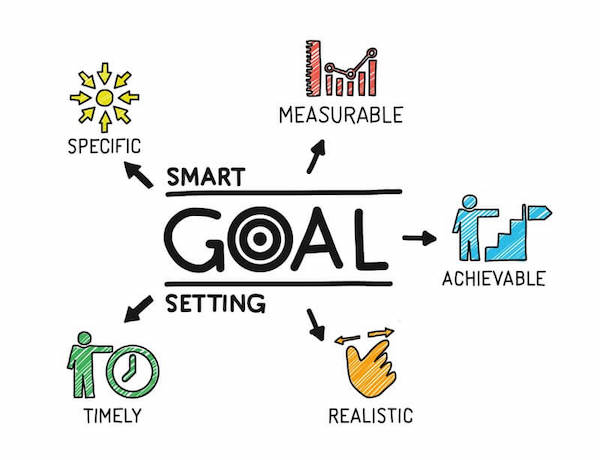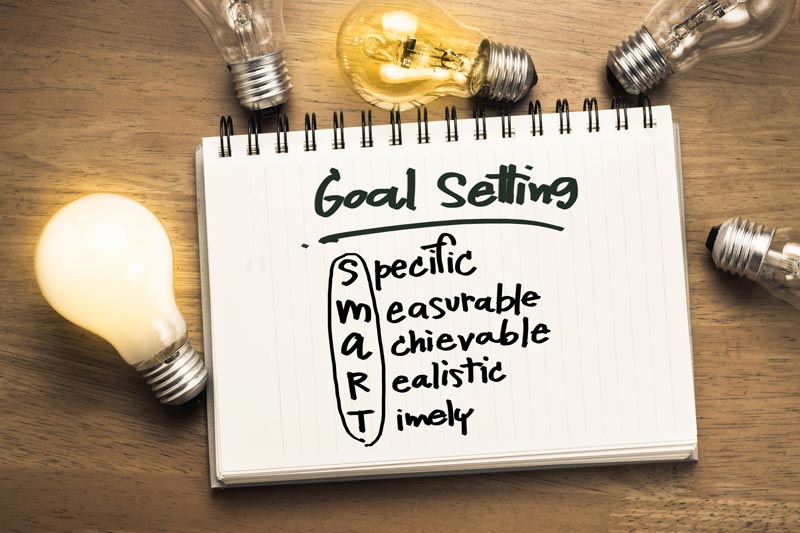Did you know that 20% of small businesses fail within the first year? The number of small businesses failing after each year only increases, 34% of small businesses fail within 2 years, 50% within 5 years, and 70% within 10 years.
Businesses can fail because of many different reasons. One of the key factors of business success is setting and achieving realistic goals. Discover more about how SMART goals and how you can achieve success in your business.
What are SMART Goals?
Are you looking for new ways to grow your small business? Or do you just want to achieve some personal goals? Then you need to implement SMART into your everyday life.
Smart focuses on how you can set, monitor, and achieve your goals. This framework of goal setting can be used to achieve both your professional and your personal goals.
Professional goal examples include acquiring new clients or customers, growing your profits, or employing new staff members.
Personal goal examples include New Year’s resolutions such as losing weight, stopping smoking, quitting your job, or taking up a new hobby.
A study by Statistic Brain found that 8% of people achieve their New Year’s goals. The study also found that less than half Americans (45%) usually set goals.
When most people set goals, they create solutions which are unclear and thus difficult to achieve. However, setting smart goals allow you to work towards a clear objective, create milestones to help you reach your goal, and evaluate your goal’s attainability.
The best part about SMART is that you can use a SMART goals worksheet to act as a checklist for your objectives and keep track of your targets. Alternatively, there is SMART software available that allows you to keep track of your goals and your achievements.

What Does the SMART in SMART Goals Stand For?
Make your goals SMART by ensuring your goal is: specific, measurable, attainable, relevant, and timely. Smart is an acronym which you can check your goals against to see if they are achievable.
Specific
The first thing you need to do when setting goals, whether they are personal or professional, is to work out the specifics of what you want to achieve. The more in-depth the description of your goal, the more likely you are to achieve it.
There are a variety of useful questions you can ask yourself, such as
- What do I want to achieve?
- Where do I want to do this at?
- How am I going to achieve my goal?
- When will I achieve my goal?
- Why do I want to achieve this goal?
- Are there any other ways of achieving it?
For example, a normal goal you might set yourself could be ‘I want to lose weight’, whereas a more specific goal would be ‘I want to lose 10 pounds by the end of summer. I will go to the gym three times a week to achieve this. I will also walk or cycle instead of using transport.’ Having more specific goals allows you to work out how you can achieve them.
Measurable
Understanding how you can measure your goal is very important to the success of achieving it. To measure your goal you need to identify what it is you will see, hear, feel, or experience when you achieve it.
Break your goal down into measurable elements, such as if you wanted to lose weight you might have weight loss milestones, i.e. you might treat yourself after you’ve lost x amount of pounds.
Attainability
Is your goal attainable? Is it an achievable thing that you can accomplish? You also need to consider whether the time, effort, and other costs your goals will take are worth the final outcome.
For example, if you want to lose weight then you need to dedicate time and effort to exercise. Additional costs might be the price of a gym membership and not getting to spend as much time with your family. But, if your mind is set on losing weight then the final outcome is worth it because you will become fitter and healthier.

Relevant
Is this goal relevant to you? Do you actually want the final outcome of this goal? Relevant goals aren’t so much about whether you have the relevant skillset or resources to achieve your goal, but rather whether it is right for you.
In terms of skillset and resources, you can get additional support or training. Setting relevant goals will help you stick to achieving them.
For example, if you said you will quit smoking but aren’t in the right mindset to give up cigarettes yet then you will ultimately fail your goal. Sometimes getting the right timing to commit to your goals is important.
Timely
Create deadlines to ensure you are pursuing your goal. Think about how long it will take you to reach each deadline and set yourself a suitable timeframe.
Don’t try to set yourself deadlines which are too hard to reach within the given time limit, as this will make you want to give up on your goals.
For example, you could set an overall deadline of losing 50 pounds in a year. To reach this goal you might first say the first month you will stop eating junk food, the second month you will start walking or jogging more, and by the third month, you might set yourself the goal of losing 15 pounds.
SMART Goals
When setting SMART goals it is important to remember that you need to be realistic about what you want to achieve and how long it will take you to achieve it. It helps to create a goals setting worksheet so you can remind yourself of your milestones and achievements, and track your progress.
Are you looking for software which can help you reach your business goals? Contact our customer support teams now and get the software support you need.




